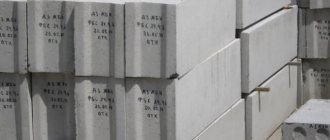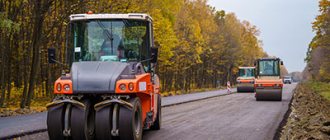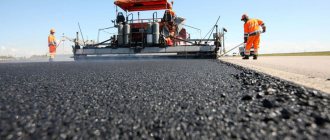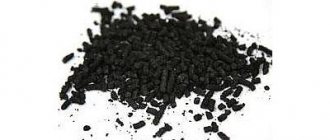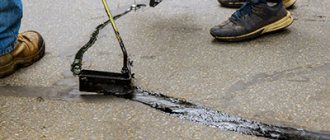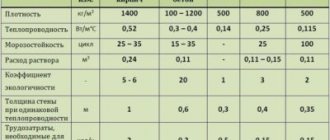The strength of asphalt is one of its most important mechanical characteristics. It shows what load a material can withstand under various types of influences. This property must be taken into account when designing the road surface.
In this article we will consider the following questions:
- What determines the strength of asphalt?
- How does asphalt gain strength?
- Why do you need to know the strength of asphalt?
- How is the strength of asphalt determined?
- How is the strength of asphalt regulated?
- How can you improve the strength of asphalt?
Let's take a closer look at each of them.
What determines the strength of asphalt?
Asphalt concrete is a complex material, which includes both inorganic components (crushed stone, sand, mineral powder) and organic (bitumen). All of them have their own physical and mechanical properties and determine the quality of the finished composite.
First of all, the strength of the road surface is influenced by the following factors:
Strength of mineral components Here we are mainly talking about crushed stone, although small aggregates - screenings and sand - also have their limitations in this regard. But it is the large grains that form the rigid asphalt frame that takes on the loads from moving vehicles. Therefore, for example, to cover a highway, they will use an asphalt concrete mixture (ABS) based on crushed stone made from granite, diorite or other durable rocks. And for a sidewalk or pedestrian path, material based on marble or limestone crushed stone will also work. You can read more about this in our article Crushed stone for asphalt.
Properties of the binder To produce durable asphalt concrete, more viscous bitumen is usually used - one that retains its hardness longer when heated. However, it should be noted that such materials usually do not tolerate low temperatures well: they become brittle and brittle. This problem is usually solved by adding polymer additives.
Internal cohesion of the mixture It characterizes how strong the bonds exist between the components of the mixture: bitumen and filler, as well as filler particles. This adhesion depends on both the physical (shape and roundness of grains) and chemical properties of the materials. For example, bitumen weakly adheres to crushed stone and screenings from acidic rocks - granite and quartz. Therefore, they require the addition of special adhesive additives.
Density and porosity Air voids remain between the filler grains in the coating. Depending on their size and quantity, asphalts are divided into dense and porous. The latter have lower strength values and are also destroyed more quickly under the influence of water, ice and deicing agents.
Temperature The physical and mechanical properties of asphalt concrete depend on its temperature. This is due to the fact that the binder in its composition softens when heated. In extreme heat, the asphalt surface becomes more flexible and begins to deform under the wheels of cars. Therefore, when constructing roads with high loads, modified bitumen material is often used.
Now you have an idea of what makes up such an important characteristic of a coating as strength. But it should be noted that asphalt concrete reaches its maximum performance only after high-quality compaction. In the continuation of the article we will talk about how this happens.
How does asphalt gain strength?
They say that you can walk and drive on asphalt pavement almost immediately after laying it. This compares favorably with concrete, which hardens within 28 days - that is, almost a month. Is it true? Let's figure it out.
There are three main types of asphalt concrete mixtures:
- Hot
- Cold
- Cast
Each variety hardens and gains strength slightly differently.
Hot asphalt
This is perhaps the most common type of asphalt concrete. It is used both in capital road construction and for the improvement of urban and private areas.
Hot asphalt gains strength in three stages:
- Compaction with rollers or vibrating plates It begins immediately after laying the ABS on the prepared area. In this case, the filler grains are adjusted to each other, and the air voids between them are filled with an asphalt binder - a mixture of bitumen and mineral powder. The coating is brought to the designed density. Only under this condition will it be truly strong and durable. You can read more about compaction technology in the article Compacting asphalt - how and with what to compact asphalt.
- Cooling and hardening of the mixture As the temperature drops, bitumen loses its plasticity and becomes hard. Complex physical and chemical processes occur in the thickness of the coating, which accompany the formation of its durable structure. They can take from several hours to several days.
- Additional compaction during operation Loads from vehicles are very different from compaction with a roller. Therefore, in the first weeks or even months after laying, the road surface continues to deform under the wheels of cars. If it was laid according to all the rules, then such a process will only harden and strengthen it. But if the asphalt is poorly compacted, then at this stage it will begin to crawl and “float”.
As you can see, this process is almost as long as concrete hardening. The difference is that concrete needs to be left alone to gain strength, but asphalt pavement can be used without restrictions in a matter of days.
In the table below you will find the answer to the question at what time you can start walking and driving on hot asphalt:
| How much time has passed since rolling | Operational readiness of the coating |
| 0 hours | You can walk |
| 8 ocloc'k | You can ride a bicycle, with great caution - in passenger vehicles |
| 20 hours | You can drive passenger vehicles, but it is better to limit the movement of heavy vehicles |
| 1-2 days | Traffic restrictions are lifted |
| 3 days | Asphalt demonstrates stable physical and mechanical properties |
For your convenience, below we have placed the same table in the form of a picture:
Please note that these figures are indicative only. The properties of asphalt concrete are highly dependent on its temperature. If it is hot outside, the coating will take much longer to harden. In this case, it is better not to touch it for 3 days.
You may also be interested in our article on the topic - Hot asphalt laying technology.
Cold asphalt
Unlike hot mixes, this variety does not need to be reheated before use. It can be laid at low temperatures (down to -5°C) and does not require the use of heavy rollers. Cold asphalt is often used for urgent pothole repairs, arrangement of pedestrian paths and surfaces in the local area.
All these properties are due to the fact that such mixtures are produced using liquid binders. They are obtained by diluting viscous bitumen with various solvents - kerosene, gasoline, liquid petroleum products, and so on.
Cold asphalt gains strength due to the gradual evaporation of these solvents, which causes the bitumen to harden. This process is quite long and takes 20-30 days. Only after a month will the coating be fully stabilized and will demonstrate its physical and mechanical properties. But you can walk and drive on it immediately after laying and compacting. As is the case with hot asphalt, cold asphalt is further strengthened during operation.
You may also be interested in our article on the topic - Cold asphalt laying technology.
Cast asphalt
This is a special type of material, which is characterized by a high content of asphalt binder. If hot and cold asphalt is a crumbly crushed stone-sand mass, well lubricated with bitumen, then cast asphalt is a plastic and fluid mixture. It requires neither leveling nor compaction.
The strength gain of cast asphalt is also due to the hardening of the bitumen. The difference is that it does not have the rigid crushed stone frame that conventional hot mixes have. This means that during the hardening period it is more plastic and easily deformed. So it is better not to drive on the cast surface at all for 2-3 days after installation.
Testing of asphalt concrete according to GOST 12801-84
The widespread use of asphalt concrete in the Russian construction industry began at the end of the nineteenth century. Due to its high-strength quality, asphalt is used for laying roads and flooring in technical premises. Amendments are made to the testing of asphalt concrete annually to improve the quality of the mixture produced.
Why do you need to know the strength of asphalt?
This indicator has the most practical significance. Based on this, ABS compositions are selected for specific tasks. For example, to lay a heavily loaded highway, you need durable asphalt with a rigid frame and a minimum content of pores. And if we are talking about a pedestrian path or a site near a private house, then you can save money and take material with worse characteristics.
The strength value is also used to determine other properties of asphalt and ABS:
- Uniformity
- Water resistance
- Frost resistance
- Shear resistance
Let's talk about them in a little more detail.
Uniformity
This is a technological property of ABS, which shows how evenly the components of the mixture are mixed. The quality of asphalt laying directly depends on it. A heterogeneous material cannot be compacted efficiently; weak areas are formed in it - places with reduced strength and water resistance values. This type of road surface quickly develops potholes and requires frequent repairs.
The homogeneity of hot mixtures is assessed statistically. To do this, they look at how much the strength values of several samples of the same material diverge - that is, they calculate the coefficient of variation.
You can learn more about this property on the Asphalt Uniformity page.
Water resistance
It characterizes the ability of asphalt concrete to resist destruction by water. The aggressive effect of moisture is that it penetrates under the bitumen films on the filler grains and tears them off, destroying the structural bonds in the coating.
Water resistance is calculated as the ratio of the strengths of asphalt in two states: dry and water-saturated.
You can learn more about this property on the page Water resistance of asphalt.
Frost resistance
It refers to the ability of asphalt concrete to withstand freezing and thawing cycles. The danger of such temperature fluctuations is that water accumulated in the pores of the coating expands when freezing and puts pressure on it from the inside.
To determine frost resistance, asphalt samples are saturated with moisture, frozen and warmed several times, and then measured to what extent its compressive strength has decreased.
You can learn more about this property on the page Frost resistance of asphalt.
Shear stability
This characteristic shows how easily asphalt deforms under the wheels of cars at high temperatures - for example, in the summer heat. The higher it is, the better the coating retains its rigidity.
Shear resistance is described by two indicators: the coefficient of internal friction and shear adhesion. To calculate the latter, the value of the compressive strength at a temperature of 50°C is used.
You can learn more about this property on the Shear resistance of asphalt page.
In the next section, we will take a closer look at what indicators are used to describe the strength of asphalt concrete and how they are measured.
Water saturation of asphalt concrete: what it depends on and what it affects
Water saturation is one of the properties of any material.
Its indicator is formed based on the ability to fill pores and cracks with liquid. Water saturation for asphalt concrete depends on its porosity. The value increases in case of insufficient compaction. The indicator will be normal if you strictly follow the production technology. Several samples are taken from the resulting asphalt. They are studied using a special technique. Water saturation of asphalt concrete according to GOST 9128-2009 is determined in laboratory conditions. To do this, material is first collected from various areas of the surface. In the selected mode, the surface is filled with water. The laboratory technician measures the amount that will be absorbed by the structure. Additionally, freezing is performed. Low temperatures negatively affect the asphalt layer. If cracks are present, their volume increases noticeably.
The situation can be avoided by additional compaction of the material.
Features of the term
For normal operation of asphalt, increased water saturation is unacceptable. If there is a deviation in the indicator, it is impossible to notice negative changes in the plane in the summer. Only specialists will be able to give a correct assessment after conducting the research. Increased water saturation is observed if a large number of pores can be detected on the surface with the naked eye. Against this background, rapid chipping of crushed stone from the surface is also observed.
An increased rate reduces the frost resistance of asphalt several times. The coating will deteriorate when cold weather sets in. If water has previously entered the surface, it begins to expand. Increasing volume results in deterioration of performance and integrity. The laws of physics lead to the fact that ice begins to break the asphalt from the inside. The surface breaks due to the pressure created by the liquid inside. The coating begins to progressively deteriorate, so further use is considered inappropriate.
Asphalt concrete pavement suffers due to prolonged moisture. Mineral grains are observed to crumble. It wears out quickly, causing potholes to appear. Water resistance directly depends on the density and the formation of stable bonds between the individual components. Thanks to this, it is possible to achieve the required level of adhesion. If the water saturation of asphalt concrete is below normal, then liquid diffusion can be observed over time. It penetrates under the bitumen film and destroys bonds. Mineral materials have positive potential. This property prevents the removal of bitumen film.
The liquid has the ability to penetrate into cracks in the material. The situation leads to a decrease in the strength of substances. Cracks weaken the properties of the structure. They begin to noticeably increase in size. Asphalt concrete loses its original strength properties. Liquids are also characterized by diffusion - the penetration of water into the material and stagnation. This leads to a wedging effect. The structure gets wet and then dries. Alternating action leads to an increase in porosity up to 7%. At the same time, the grain size decreases noticeably, and more liquid begins to accumulate in the pores.
Coarse concrete has many open pores. For fine-grained grains, their amount ranges from 30 to 40% of the total mass. Water saturation is calculated after swelling analysis and water resistance coefficient calculation. The indicator must be greater than 0.9. Only with prolonged water saturation can it be reduced to 0.8.
Frost resistance directly depends on the number of open pores. The bonds created between bitumen and minerals should also be taken into account. They suffer in spring and autumn. During this period, alternate freezing and freezing are observed. Against this background, cracks form, which increase with each cycle.
Frost resistance is usually expressed as a coefficient. It increases in each cycle, so the strength of the formed surface suffers. The indicator is lower for granite, but higher for limestone. Asphalt concrete can withstand more cycles only with the correct forming technology. Otherwise, destruction can be seen in the first season. The surface of such a sample cannot be used for a long period of time.
Asphalt concrete: characteristics and properties
Asphalt concrete is a heterogeneous material, and its properties are determined not only by the parameters of the components, but also by the preparation method, temperature indicators, method of laying and air cooling. To evaluate the properties of asphalt, laboratory tests are used. Let's consider the basic properties of asphalt, technical and operational, on which its use depends.
Density
Density can be calculated or determined experimentally using prototypes obtained from the mixture being tested under laboratory conditions. Samples can be taken from the mixer during asphalt preparation, as well as from the laid road surface (cores). It is enough to simply determine the average density, from which the average porosity and density of the solid component can be calculated:
- samples are weighed in air;
- samples are immersed in water at 20°C, where they are soaked for 30 minutes, and weighed in water;
- The samples are removed from the water, wiped with a cloth and weighed in air again.
As a result of measurements, two density indicators can be obtained:
- The density of the core, which is the mineral component of asphalt, taking into account the presence of pores. This indicator is used in some calculations. It is calculated from the measured average density, taking into account the composition of the mixture - how many mineral components it contains and how much bitumen is used.
- The true density of asphalt, which does not take pore volume into account. This indicator is determined by the density of the individual components of the mixture or measured experimentally. If a core is examined, the true density is determined experimentally.
Porosity
This indicator is determined by the pore volume. It can be calculated using true and average density. An experimental technique is also used in the laboratory:
- samples are suspended in air as well as in H2O;
- samples placed in 20-degree water are sent to a vacuum unit;
- a pressure of 2000 atm is set and held for an hour for hot and warm types of asphalt and half an hour for cold asphalt;
- The pressure is maintained at 94250-104150 for 30 minutes;
- weighing is carried out in water and in air.
Methods for determining the strength of asphalt
During its operation, asphalt concrete is exposed to a wide variety of influences. After all, cars on the road surface not only stand still, but also drive, accelerate, brake, and turn sharply. All this is a load of varying degrees and directions. That is why different types of strength are determined for asphalt.
The regulatory documents establish the following test methods:
- Compressive strength
- Tensile strength at splitting
- Bending tensile strength
- Fatigue strength under repeated bending
Let's figure out how they differ from each other.
Compressive strength
It shows the maximum pressure a material can withstand during vertical compression. For example, when heavy vehicles are standing on or driving across the surface.
This is the most common indicator, which is standardized in GOST 9128-2013.
It must be indicated in the quality certificate for asphalt:
- For hot mixtures – at temperatures of 50°C and 20°C
- For cold mixtures - at a temperature of 20°C, in a dry and water-saturated state
This is due to the fact that the strength of the material, as we have already noted, depends on its temperature.
The test begins with the preparation of cylindrical samples - samples of a freshly prepared mixture or cuttings from the laid coating. In this case, the former are compacted in a laboratory press, and the latter are cleaned of dust and debris, washed and dried.
Before starting measurements, the asphalt is brought to the desired temperature in a thermostat.
Compressive strength is determined as follows:
- A sample of the required temperature is placed vertically on the bottom plate of a hydraulic press. The top plate is installed so that there is still 1.5-2 mm between it and the top edge of the sample.
- The asphalt sample begins to be loaded at a press plate speed of 3 mm/min. The pressure at which the sample begins to collapse is recorded.
- Ultimate compressive strength Rcom is calculated using the formula:
The strength of asphalt saturated with moisture is determined in the same way. For this purpose, samples that have passed the water saturation test are taken. You can read more about this procedure in the article Water saturation of asphalt.
Tensile strength at splitting
This test shows how much load is required to split an asphalt sample along a generatrix. The indicator is measured at a temperature of 0°C and is used to assess such material properties as crack resistance.
The test procedure is similar to that described above.
Only two points differ:
- The cylindrical sample is installed on the bottom plate of the press not vertically, but horizontally
- The top plate moves faster - at a speed of 50 mm/min
As with compression, the maximum load that the sample can withstand is recorded.
The tensile strength during splitting Rр is calculated by the formula:
Typically this figure is 6-8 times less than the compressive strength.
Bending tensile strength
This characteristic shows how much load asphalt can withstand when bending without breaking. It is not yet standardized in the general GOST for asphalt concrete.
To carry out the test, dense parallelepipeds are formed from samples of the asphalt concrete mixture.
The procedure looks like this:
- The asphalt sample is mounted horizontally on two supports, which are located at its edges. A metal rod with a diameter of 10 mm is placed on top of the sample in the middle.
- Lower the top plate of the press and begin to load the sample at a speed of 3 mm/min. In this case, the pressure is concentrated in the area under the rod - the sample bends in the middle.
- The maximum load under which the asphalt begins to collapse is recorded.
- The tensile strength in bending R bend is calculated by the formula:
In the same test, other indicators are recorded and determined:
- Deflection amount
- Limit relative deformation
- Strain modulus
They are used to characterize the deformative properties of a material. You can read more about them on the page Deformability of asphalt.
Fatigue strength under repeated bending
The characteristics described above indicate how well the material can withstand static pressure. But these are not entirely objective indicators. Indeed, in reality, the load on the road surface is cyclical. It either increases (for example, during rush hours) or decreases.
What happens to the material during this time? Tiny cracks appear in its thickness. At first, they don’t show themselves at all. But over time, these microdamages accumulate, grow and unite. At some point, the asphalt can no longer hold up and collapses.
This process is called material fatigue. And the ability to resist it is fatigue strength or endurance. The procedure for determining it for asphalt concrete was developed relatively recently.
Its essence lies in the fact that a cyclic load is applied to a sample in the form of a slab - compacted in the laboratory or cut from a coating - and observed how its strength changes with an increase in the number of cycles. This dependence is depicted in the form of a graph.
If you are interested in specific instructions for testing and calculation formulas, you can find them in GOST R 58401.11-2019.
Asphalt strength requirements
Of all the above indicators, GOST 9128-2013 standardizes two: compressive strength and split tensile strength. The latter is used to characterize crack resistance.
Below we will look at what acceptable values are given in the document. But first, let's remember the two classifications of asphalt: residual porosity and quality.
Based on porosity, materials are divided into:
- High density (residual porosity from 1% to 2.5%)
- Dense (from 2.5% to 5%)
- Porous (5% to 10%)
- High porosity (10% to 18%)
As we have already noted, with an increase in porosity - the content of air voids - the strength of the road surface decreases.
Based on quality, asphalt concrete is divided into three grades:
- Mark I
- Mark II
- Mark III
You can read more about these and other classifications in the article Types of asphalt.
The minimum acceptable strength values vary depending on these two characteristics. For example, grade I high-density asphalt is considered a premium quality material. It is used when laying heavily loaded routes and highways, coatings on bridges and overpasses. Naturally, the requirements for it will be strict. But for porous asphalt concrete, which is usually used on sidewalks, high strength is not so important.
For hot mix asphalt concrete, GOST establishes the following standards:
| Index | View | Brand | |||
| I | II | III | |||
| Ultimate compressive strength, MPa, not less | at 50°C | High density | 1,0-1,2 | – | |
| Dense | 0,9-1,6 | 0,8-1,5 | 0,8-1,2 | ||
| Dense and high density | 0,7 | 0,5 | – | ||
| at 20°C | Porous and highly porous | 2,5 | 2,2 | 2,0 | |
| at 0°C | 9,0-13,0 | 10,0-13,0 | 10,0-13,0 | ||
| Tensile splitting strength at 0°C | MPa, not less | Dense and high density | 3,0-4,0 | 2,5-3,5 | 2,0-3,0 |
| MPa, no more | 5,5-6,5 | 6,0-7,0 | 6,5-7,5 | ||
For your convenience, below we have placed the same table in the form of a picture:
For cold mixtures, the figures are given below. This is due to the fact that they are not used in capital road construction. Such asphalt is taken either for urgent repair of potholes, or for laying sidewalks and pedestrian paths.
The requirements for it are:
| Index | Brand | ||
| I | II | ||
| Ultimate compressive strength, at a temperature of 20°C, MPa, not less | Dry asphalt | 1,5-2,0 | 1,0-1,5 |
| Water-saturated asphalt | 1,1-1,8 | 0,7-1,2 | |
| After prolonged water saturation | 0,8-1,5 | 0,5-0,9 | |
For your convenience, below we have placed the same table in the form of a picture:
The remaining indicators are not standardized in the general GOST, but can be taken into account in more specific recommendations and instructions.
In the final section of the article we will talk about how their strength properties are improved during the production of asphalt concrete mixtures.
Asphalt concrete: characteristics and properties
Asphalt concrete is a heterogeneous material, and its properties are determined not only by the parameters of the components, but also by the preparation method, temperature indicators, method of laying and air cooling. To evaluate the properties of asphalt, laboratory tests are used. Let's consider the basic properties of asphalt, technical and operational, on which its use depends.
Duration of operation
The service life of a road surface is determined by a significant number of factors, which include not only the performance of the asphalt concrete itself, but also numerous factors of external origin - traffic activity on the road, the condition of the soil under the road surface, and others. Depending on the purpose, the durability of the coating can reach 10-20 years.
Water resistance
If water has a long-term effect on the coating, the structural contacts between the mineral particles may be disrupted, begin to chip, and the coating will begin to deteriorate. If the road is wetted and dried periodically, this accelerates the destruction of the road surface.
The water resistance of asphalt is considered as the ratio of the strength characteristics of a dry sample and a sample saturated with water. After two weeks of saturation with water, the indicator should be 0.8. Asphalts with minimal porosity have the best water resistance indicators.
Frost resistance
The ability of asphalt to withstand frost is directly related to the number of open pores. If water gets into them and freezes, the asphalt begins to crack. Frost resistance is determined by a coefficient reflecting the decrease in tensile strength when carrying out a given number of freezing cycles with subsequent thawing of the samples. In this case, the contact of the mineral aggregate with the bitumen is important.
The connection between crushed granite and bitumen is carried out at a physical level, so the frost resistance of granite-based asphalt is low. But crushed limestone enters into a chemical reaction with bitumen, providing increased frost resistance of asphalt.
Wear resistance
This parameter depends on the friction created when moving over the surface of car wheels. Wear occurs due to the loss of individual particles of sand or crushed stone contained in the asphalt. In this regard, granite crushed stone in asphalt exhibits better properties than limestone. In practice, asphalt wear is about 0.3 -1.0 millimeters per year.
Technical indicators
The structural bonds of asphalt are reversible. That is, it is able to exhibit different qualities at different temperatures and when the load changes. Asphalt can be in three states:
- elastic-brittle, reminiscent of cement, when layers of bitumen fix the mineral structure of asphalt;
- elastic-plastic, when the bitumen layers connecting the grains have elasticity and resilience;
- viscous-plastic, when the bitumen connecting the mineral elements is in a semi-liquid state and deforms under load.
The most important thing is how much asphalt, found in all three states, is able to maintain its properties.
General properties of asphalt
Strength is the most important indicator of asphalt concrete. It is perfectly reflected by the physical and mechanical indicators described below:
- Deformability, measured in comparison with a standard, the ability to deform during bending and stretching. A relative elongation of 0.004–0.008 (at 0°C) and 0.001–0.002 at +20°C can be considered normal.
- Creep, which is understood as subtle deformation that occurs over a long time. During testing, a continuous load is applied to the sample.
- Relaxation is the property of asphalt, consisting of parts in different states of aggregation, to change its structure under load, as a result of which its influence on the material decreases. When heated, the ability to relax increases, and when it decreases, it decreases. The intensity of the stress reduction determines the resistance of asphalt concrete to deformation.
- Roughness is a serious indicator of asphalt concrete, on which the adhesion to the surface of car wheels depends. The rating is the slip resistance coefficient. This indicator depends on humidity: a dry coating is the roughest, and the slip coefficient is 0.7 - 0.9. When wet, the resistance decreases and reaches 0.5 - 0.7. If the indicator drops to 0.4 and below, this is unacceptable, since the road no longer meets safety conditions.
Special properties of asphalt
The parameters of asphalt concrete mixtures are constantly being studied. They can be different for different types of asphalt, and also differ under different operating conditions: in rainy and dry areas, in places with winter cold, etc. Mandatory requirements for the composition and technique of preparing asphalt mixtures may be based on the requirements provided for by GOST.
For any type of asphalt, the adhesion of the mineral filler to the binder must be maintained - delamination is unacceptable.
Our advantages
Thank you, your application has been sent successfully!
Source: https://iso-altair.ru/info/asfaltobeton-xarakteristiki-i-svojstva/
Ways to increase the strength of asphalt
At the beginning of the article, we looked at the main factors that influence this property of the material. It is with them that manufacturers and researchers work when designing ABS compounds.
Four groups of methods can be distinguished:
- Use of optimal raw materials
- Increased adhesion of the mixture
- Increasing the density of asphalt concrete
- Use of protective coatings
Let's look at each of them in more detail.
Use of optimal raw materials
The main component of asphalt concrete, which takes on the load from transport, is a mineral filler: crushed stone and sand (screenings). Accordingly, the strength of the coating can be increased if you use a material with higher performance for ABS.
GOST 9128-2013 establishes the following requirements for mineral components:
| Index | Breed type | Asphalt brand | ||
| I | II | III | ||
| Grade for crushability (for crushed stone), no less | Igneous and metamorphic | 800-1200 | 600-1000 | 600-800 |
| Sedimentary | 600-1200 | 400-1000 | 400-600 | |
| Strength grade (for screening), no less | Any | 600-1000 | 400-800 | 400-600 |
For your convenience, below we have placed the same table in the form of a picture:
Strength at high temperatures can also be increased by using the optimal grade of binder. It indicates the viscosity of bitumen. The higher the grade, the faster the material softens and becomes pliable.
The characteristics of different grades of bitumen are as follows:
| Index | Brand | ||||
| BND 200/300 | BND 130/200 | BND 90/130 | BND 60/90 | BND 40/60 | |
| Softening temperature, °C | 35 | 40 | 43 | 47 | 51 |
| Brittleness temperature, °C | -20 | -18 | -17 | -15 | -12 |
For your convenience, below we have placed the same table in the form of a picture:
You may notice that both softening and brittleness temperatures increase as the grade decreases. This means that asphalt on viscous bitumen retains its strength well in the heat, but cracks easily in cold weather. But in Russia there are both cold winters and high temperatures in summer, and often in the same regions. So what should we do then?
To solve this problem, ordinary bitumen is modified with polymer additives - for example, artificial rubber (SBS). The resulting polymer-bitumen binder retains its qualities at both high and low temperatures.
Increased adhesion of the mixture
This refers to the ability of the binder to adhere tightly to the filler grains. If the adhesion of the components is low, then the bitumen is unable to retain mineral particles in the coating. Consequently, asphalt quickly loses its strength.
You can increase grip in the following ways:
- Partially or completely replace natural sand with screenings
- Use activated mineral powder
- Add an adhesive additive (surfactant)
Note that the adhesion of bitumen to the mineral filler affects not only the strength of asphalt. By increasing it, you can improve a number of other indicators.
These include:
- Water resistance
- Frost resistance
- Chemical resistance
- Shear stability
You can read more about them in the relevant articles on our website.
Increasing the density of asphalt concrete
The more voids in the material, the lower its strength. In addition, high porosity negatively affects other characteristics of asphalt - primarily, water and frost resistance.
You can get a denser coating in the following ways:
- Design a mixture with a high content of fine grains
- Increase the content of asphalt binder - a mixture of bitumen with mineral powder
- Use heavier equipment for rolling ABS
Note that the first option is far from universal. Fine crushed stone and sand are compacted really well, with a minimum of voids formed between them. But they do not form such a rigid frame as large crushed stone.
The best result is achieved when the above methods are applied simultaneously. Although in practice this is not always feasible - after all, the budget for road construction is not rubber.
